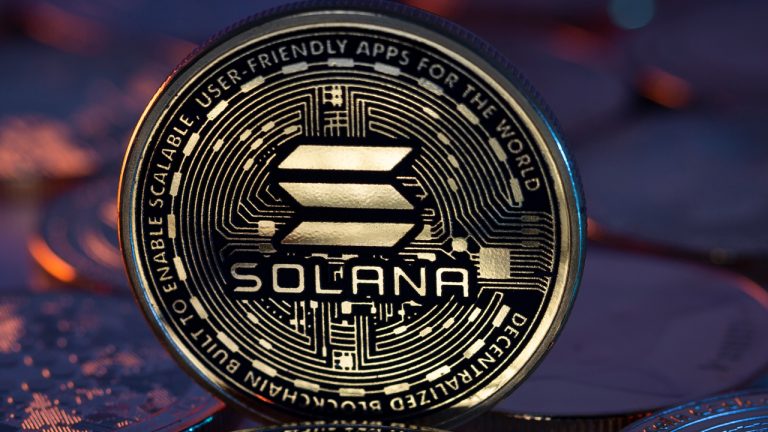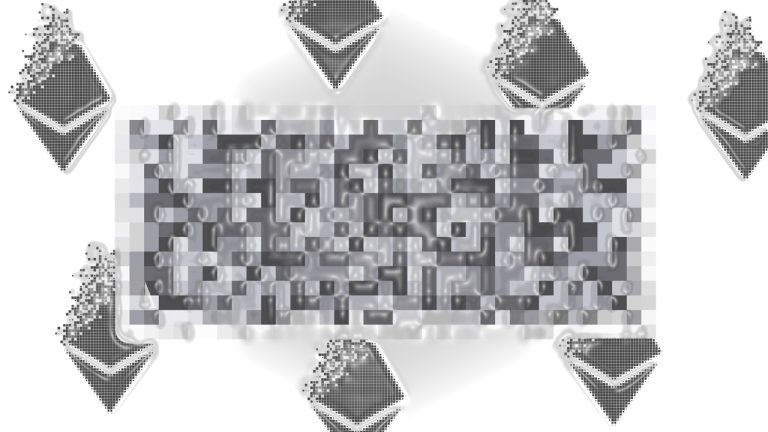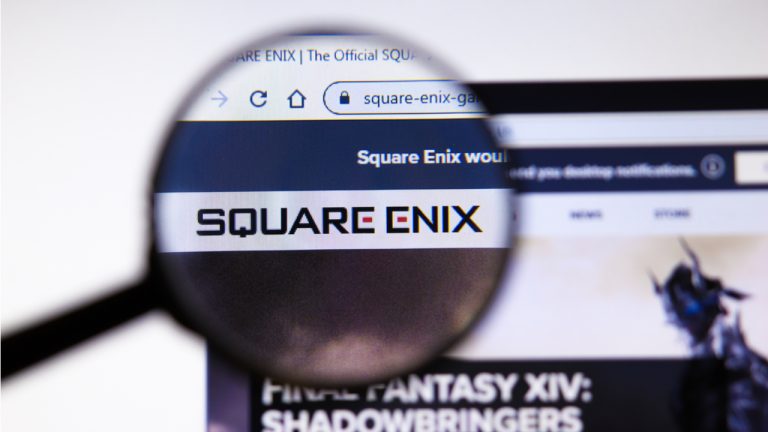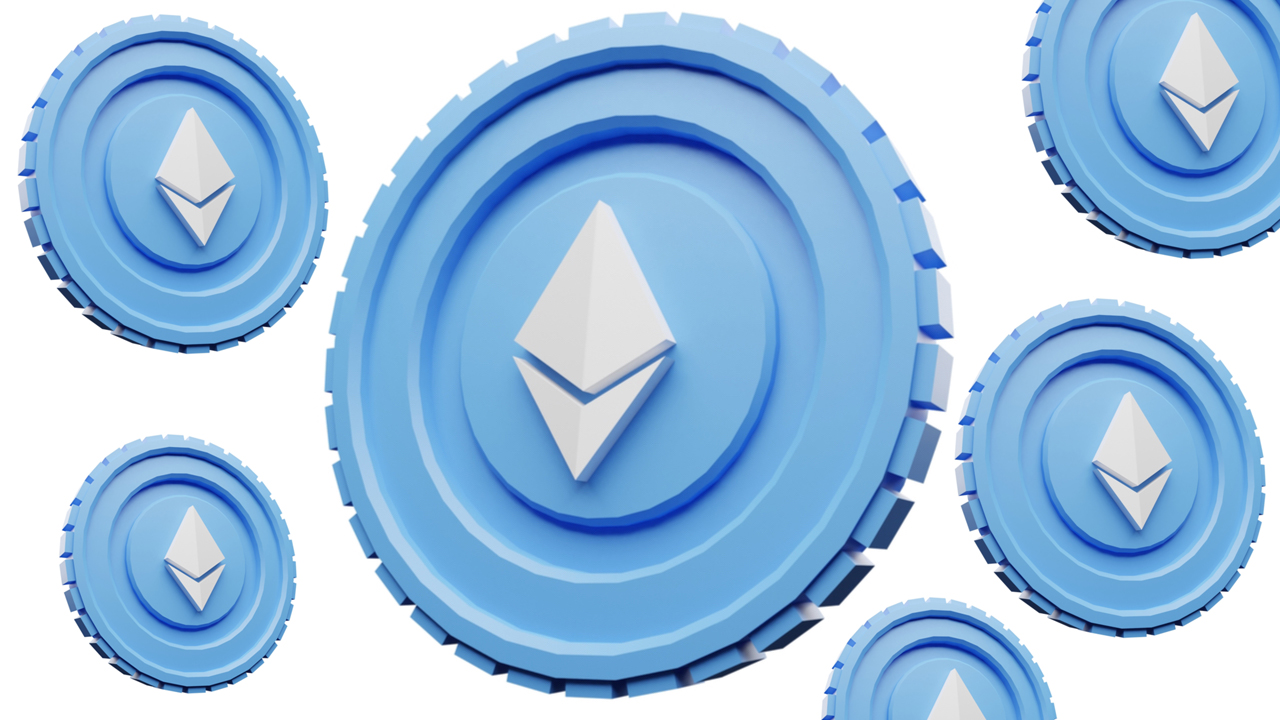 The Solana smart contract token network experienced a technical glitch on Saturday, February 25, 2023, known as a “large forking event,” causing transaction failures for some users. Solana’s incident report referred to it as “cluster instability” and indicated that a coordinated restart was launched to accelerate block finalization. Solana Blockchain Deals With ‘Large Forking Event’ […]
The Solana smart contract token network experienced a technical glitch on Saturday, February 25, 2023, known as a “large forking event,” causing transaction failures for some users. Solana’s incident report referred to it as “cluster instability” and indicated that a coordinated restart was launched to accelerate block finalization. Solana Blockchain Deals With ‘Large Forking Event’ […]
The issue is linked to the recent network upgrade from 1.13 to 1.14, which slowed block finalization.
Solana network faced a slowdown in block production on Fev. 25 following the upgrade in the validator software. The incident resulted in disruptions to transactions and led validators to downgrade the software in an attempt to restore network performance.
The technical issue started around 6:00 AM (UTC), leading validators to downgrade to version 1.13 in an effort to restore transactions in the network. The downgrade, however, was not enough to restore Solana to normal operations, forcing the decision to restart the network on v1.13.6.
The Solana network is currently restarting after an issue during the upgrade from 1.13 to 1.14 that slowed block finalization
— Solana Compass (@SolanaCompass) February 25, 2023
Once validators with 80% of stake have restarted the network will resume
You can track the progress of the restart here:https://t.co/HclrUqWQ2y
"The network experienced a significant slowdown in block production that coincided with an upgrade to validator software. Engineers are still conducting a root cause analysis," noted Solana's compass website.
Related: The state of Solana: Will the layer-1 protocol rise again in 2023?
The issue is linked to the upgrade from 1.13 to 1.14, which slowed block finalization. The Solana network is currently restarting, and to resume operations is necessary 80% of active stake online:
"As more validators complete their restart this number will rise in line with the amount of stake they have delegated: this means larger validators such as CEX have an outsized impact on restart times."
A solution to the incident was discussed among Solana's validators during a few hours following the issue. Infrastructure provider Chorus One noted in a Tweeter that the incident "demonstrated how genuinely decentralized the network is." Chorus One continued:
"Without all these debates, we would be back up in an hour. But, every decision along the way - whether to downgrade, whether to restart, when to switch from downgrade approach to restart approach - is debated. Voting happens. We end up taking 8-10 hours to recovery, instead of 1."
Solana is an open source layer-1 blockchain. Its third-generation network architecture is designed to facilitate smart contracts and decentralized application (DApp) creation. The Solana blockchain was launched during the ICO boom of 2017. The internal testnet of the project was released in 2018, followed by several testnet phases before the main network was officially launched in 2020.

The initial “Dfura” marketplace, which is currently in development, is expected to include up to 10 Web3 data providers.
Infura is developing a decentralized marketplace of data providers that will help to prevent Web3 app crashes in the future, according to a Feb. 6 Cointelegraph interview with Infura researcher Patrick McCorry.
McCorry stated that the new “Dfura'' or “decentralized Infura” will help to ensure that blockchains remain decentralized by distributing data provider services among multiple providers in a marketplace. It will have “up to 10 providers initially” that will “work together to bootstrap the network and then […] Gradually iterate and get more players.” Some potential partners will meet at ETH Denver in late February or early March to discuss the project's next steps.
The new project will not be a new blockchain. Instead, it will be a marketplace that matches consumers of blockchain data with data providers, as McCorry explained:
“There'll be a marketplace where basically the new providers will sign up, they'll have some stick in the system. They can place the resources that they have available, so I can say, I can satisfy these requests at this price. Users could come along and then buy those resources and then it's like a matchmaking service of users.”
McCorry believes this will make the Web3 ecosystem more resilient by allowing users to rapidly switch to a new provider if the one they are currently using experiences an outage. He also stated that the new “Dfura” might be more censorship-resistant than the current service because providers will be spread out over many different geographical areas and operating under different jurisdictions.
Related: Are we still mad at Metamask and Consensus for snooping on us?
Infura is a suite of APIs and developer tools that is used by Web3 app developers to pull data from blockchains. It is used by many different Web3 apps, including Metamask, Gnosis, Aragon, and others. It is also used by many centralized exchanges to track deposit and withdrawal transactions.
Although blockchain networks charge transaction fees to prevent too many transactions from overloading servers, these fees are only charged to users writing data to the blockchain. Infura has emerged as one way to charge developers or users for reading data, which does not usually incur a transaction fee on-chain.
As Infura has become increasingly used by developers, it has come under fire for allegedly being too centralized. In November 2020, the Metamask wallet app stopped working for most users when Infura servers went down, and some centralized exchanges were prevented from getting accurate transaction data from it anymore. This led some critics to question whether Ethereum can be genuinely decentralized as long as developers depend on Infura to provide data for their users.
Parts of this article were based on an interview with Patrick McCorry conducted by Cointelegraph’s Andrew Fenton at Starkware Sessions 2023 in Tel Aviv.

Other new features include a subnet deployment service and GovCloud integration for compliance-friendly Dapps
Ava Labs, developer of the Avalanche network (AVAX), has partnered with Amazon Web Services (AWS) to implement new features intended to make running a node easier, according to a January 11 blog post from Ava Labs.
The new features include one-click node deployment through the AWS Marketplace, AWS GovCloud integration for Dapp developers concerned about compliance, and the ability to create Avalanche subnets with just a few clicks.
It’s official! @Amazon #ChoseAvalanche to bring scalable blockchain solutions to enterprises and governments #AWS fully supports Avalanche’s infrastructure and dApp ecosystem, including one-click node deployment, offering the best tooling for these high compliance use cases. pic.twitter.com/syInSrU9XD
— Avalanche (@avalancheavax) January 11, 2023
In the announcement post, Ava Labs CEO Emin Gün Sirer stated that AWS has been an important part of the Avalanche ecosystem in the past, as it has allowed Dapp developers to easily launch nodes to test their software. He expects these new features to make AWS even more useful to Avalanche Dapp developers. He explained:
“It has been a huge boon for both individual and enterprise developers to be able to spin up nodes and test networks on the fly with AWS in whatever legal jurisdiction makes the most sense for them. I’m proud that we’ve implemented a protocol that can accommodate millions of participants with near-instant finality. Our work with Amazon can accelerate the positive impact of Avalanche.”
Related: Defrost Finance explains how it will compensate victims of hack
The response of the Avalanche community to the news was mostly positive. One user posted a tutorial showing how to launch an Avalanche node using the new features:
This is a big deal!! #AWS x #Avalanche https://t.co/NmpZNyhZMJ
— specialk (@knakamor) January 11, 2023
BTW this is how you can create an avalanche node on AWS pic.twitter.com/PfKRyjMEl9
Others focused on the price action resulting from the announcement:
AWS candle for $AVAX. pic.twitter.com/h6BrLd7pNk
— :omer (@demirelo) January 11, 2023
AWS isn’t the first cloud-computing system that Ava Labs has partnered with. In December, it formed a similar relationship with Alibaba Cloud.

Traders using builders to execute their complex trades could save a significant chunk of their gas fees as they no longer have to pay for failed transactions.
Ethereum’s Shanghai upgrade, the next major upgrade post Merge, is slated for the second half of 2023. The upgrade would be a key milestone as it would allow holders who have staked their Ether (ETH) for years to withdraw them systematically and make the network more scalable.
Apart from some of the major scalability upgrades, the key event would also tuck in a few minor Ethereum improvement proposals (EIPs), including EIP-3651, EIP-3855 and EIP-3860. Among all the upcoming improvement proposals, EIP-3651, called WARM Coinbase, could be a game changer that could reduce network fees for some of the key network participants called builders.
Coinbase here is the name of the software that builders use to receive new tokens on the network. Every new transaction on the platform needs to interact with the coinbase software multiple times, The first interaction costs more as the software needs to “warm” up, and then the fees decline as the interactions increase. However, with the introduction of EIP-3651, the coinbase software will remain warm to begin with, thus requiring a lower gas fee to access it.
Doing so would reduce fees for calls that make transfers to the COINBASE address, which is frequently used in systems like Flashbots (do they not have a Twitter???)
— timbeiko.eth (@TimBeiko) March 4, 2022
As the name suggests, builders are responsible for packaging Ethereum transactions into blocks, thus called block builders. These transactions are then forwarded to validators, who put them in the proper order in the blockchain.
Related: Vitalik reveals a new section in the Ethereum roadmap: The Scourge
These builders are paid by traders to arrange transactions in a block in a certain order, meaning traders pay higher gas fees to get their transactions validated earlier. Currently, Flashbots is the biggest builder in the Ethereum ecosystem accounting for 80% of relayed blocks.
While validators using builders will benefit the most from the upgrade, traders who use builders to execute their trades could also benefit, as they no longer have to pay transaction fees for failed trades. Traders are currently charged for failed transactions as well because miners need to confirm transactions to the chain whether they succeed or fail.
The testnet version for the Shanghai upgrade dubbed Shandong went live on Oct. 18, and Ethereum developers will be working on various implementations until September 2023.

The parent company of mobile communications giant T-Mobile says it’s launching an Ethereum (ETH) staking validator as part of its support for the world’s second-largest blockchain by market cap. According to a new press release, Deutsche Telekom is supporting Ethereum’s transition from a proof-of-work consensus mechanism into a proof-of-stake one by operating validator nodes through […]
The post T-Mobile Parent Company Says It Supports Ethereum As Giant Launches New Staking Validator appeared first on The Daily Hodl.
 Prior to The Merge, Ethereum used to have dozens upon dozens of mining pools dedicating hashrate toward the blockchain network. That has all changed and most of the miners transitioned or plan on transitioning to other Ethash compatible coins like ethereum classic, ERGO, and the new fork ETHW. Now Ethereum blocks are verified by validators […]
Prior to The Merge, Ethereum used to have dozens upon dozens of mining pools dedicating hashrate toward the blockchain network. That has all changed and most of the miners transitioned or plan on transitioning to other Ethash compatible coins like ethereum classic, ERGO, and the new fork ETHW. Now Ethereum blocks are verified by validators […] Square Enix, one of the biggest Japan-based gaming companies, has inked a partnership with Oasys, a Web3-oriented blockchain project. As part of this partnership, Square Enix will be part of the first 21 validators of the Oasys network, and will explore new possibilities regarding developing blockchain games using this decentralized tech, including user-generated contributions. Square […]
Square Enix, one of the biggest Japan-based gaming companies, has inked a partnership with Oasys, a Web3-oriented blockchain project. As part of this partnership, Square Enix will be part of the first 21 validators of the Oasys network, and will explore new possibilities regarding developing blockchain games using this decentralized tech, including user-generated contributions. Square […]
The Ethereum merge is fast approaching and those with assets at stake should keep a close eye on the following data sources.
The assumption that Ethereum will just transition to a fully functional proof-of-stake (PoS) network after the Merge somewhat ignores the risk and effort necessary to move an asset that has a $193 billion market capitalization and 400 decentralized applications (DApps).
That is precisely why monitoring vital network conditions is essential for anyone willing to trade the event which is scheduled for Sept. 14, according to ethernodes.org. More importantly, traders should be prepared to detect any alarming developments in case things go wrong.
Apart from the $34.2 billion in total value locked in smart contracts, another $5.3 billion in Ether is staked on the Beacon Chain. The network is currently used by many tokens, oracle providers, stablecoins, layer-2 scalability solutions, synthetic assets, nonfungible items (NFT), decentralized finance (DeFi) applications and cross-chain bridges.
This partially explains why the Merge has been postponed multiple times through the years and why it is deemed to be the most significant upgrade in the history of the network.
For this reason, three different testnets have undergone the Merge, with Goerli being the latest on Aug. 11. Curiously, minor issues were presented on all testnet implementations, including Ropsten and Sepolia. For instance, Ethereum developer Marius van der Wijden noted that “two different terminal blocks and lots of non-updated nodes” slightly slowed the process down.
It doesn’t matter what the consensus mechanism is. All blockchains rely on new blocks being proposed and validated. There are established block parameters that must be followed even to be considered by the network participants.
In the case of the Ethereum Merge, an epoch is a bundle of up to 32 blocks that should be attested within six and a half minutes. Actively monitoring the ETH2 Beacon Chain Mainnet from reputable sources like BeaconScan by Etherscan and Ethscan ETH2 Explorer by Redot is important.

Red flags on this monitor would be low voting participation on the epochs, the lack of finality after thirteen minutes (2 epochs) or a grind halt on proposed blocks.
Infura provides infrastructure for building decentralized applications, allowing developers to deploy their solutions without hosting their own full Ethereum node. The company is fully owned by Ethereum venture capital group ConsenSys, which is controlled by Joseph Lubin.
According to Infura’s website, projects relying on its infrastructure include Uniswap, Compound, Maker, Gnosis, Brave, Decentraland and Web3 wallet provider Metamask.

Thus, monitoring Infura’s API is a good starting point to evaluate Dapps' performance. In addition, their status page should reliably display real-time updates, considering how closely tied Infura works with the Ethereum ecosystem.
Related: ETH Merge, CoinGecko co-founder shares strategy for forked tokens
The Ethereum Merge consensus mechanism has embedded penalty rules designed to prevent attacks. Any validator deliberately misbehaving is slashed, meaning part of its respective 32 Ether stake is removed. Repetitive slashes will eventually cause the validator to be ejected from the network. Staking providers and the validator software have built-in protection to prevent someone from accidentally being slashed, for example, if their connection went down.

Traders need to understand that slashing is a standard action of the network, a protective measure, so it should not immediately be deemed unfavorable. A worrisome environment would be hundreds of validators being slashed simultaneously, potentially indicating that their software is not functioning as it should.
There are over 410,000 active validators, so even if 20% or 30% of them eventually went offline, the network would continue as designed. Monitoring slashing is a preemptive measure because it likely indicates that some service, such as a hosting provider, has gone offline or some incompatibility arose during the Merge.
Ethereum advocates should consider monitoring external data instead of just their own node and server. There could be delays or even erroneous warning signs, so using multiple sources of information could help one avoid being misled by data from a single website or a post on social networks.
The views and opinions expressed here are solely those of the author and do not necessarily reflect the views of Cointelegraph. Every investment and trading move involves risk. You should conduct your own research when making a decision.
 As Ethereum’s transition to proof-of-stake (PoS) gets closer and the network’s hashrate taps another all-time high, the Ethereum 2.0 contract is close to nearing 13 million ether worth $22.6 billion using today’s ether exchange rates. Moreover, according to a decentralized finance (defi) educator, the $22.6 billion worth of ethereum that continues to grow won’t be […]
As Ethereum’s transition to proof-of-stake (PoS) gets closer and the network’s hashrate taps another all-time high, the Ethereum 2.0 contract is close to nearing 13 million ether worth $22.6 billion using today’s ether exchange rates. Moreover, according to a decentralized finance (defi) educator, the $22.6 billion worth of ethereum that continues to grow won’t be […]